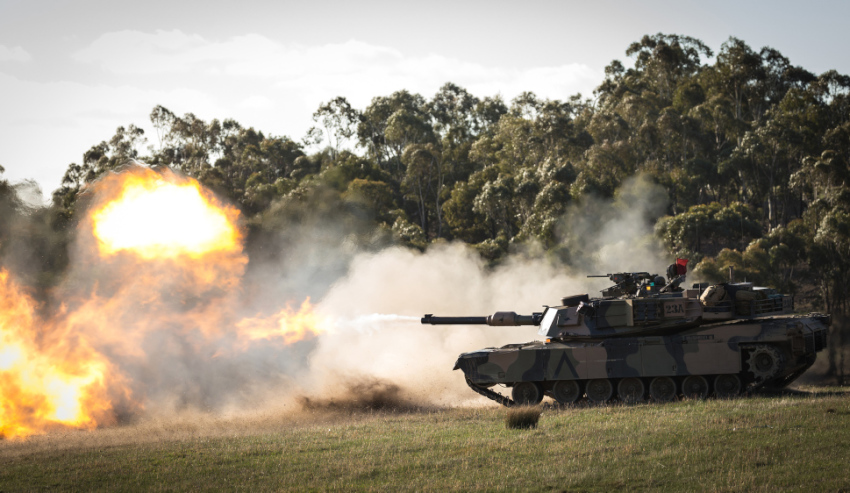Australia’s pursuit of a dedicated amphibious power projection capability is one of the core modernisation programs for both the Army and the ‘Joint Force’ ADF - however the need for a ‘hard and fast’ conventional Army organisational unit is rapidly becoming a necessity.
To continue reading the rest of this article, please log in.
Create free account to get unlimited news articles and more!
Modern warfare has rapidly evolved over the last three decades, from high-tempo, manoeuvre-based operations that leveraged the combined capabilities of air, sea, land and space forces to direct troops, equipment and firepower around the battlefield during the first Gulf War, to low intensity, humanitarian and peacekeeping operations in southern Europe and the south Pacific, and the eventual rise of asymmetrical, guerilla conflicts in the mountains of Afghanistan and streets of Iraq.
This evolution has forced a major strategic rethink in militaries around the world, particularly as peer and near-peer competitors continue to invest in key technologies and combined arms capabilities, leveraging off the lessons learned over the preceding decades.
Australia is no different. The introduction of Plan Beersheba in 2011, and the shift toward developing a truly 'combined arms' force capable of leveraging Australia's traditional advantages in high-tech platforms, world-class infantry and 'espirit de corps', serves as the nation's first attempt to modernise and recapitalise the Army to face the fluid tactical and strategic challenges of the 21st century battlefield.
The Army's major recapitalisation and modernisation programs were initiated with the introduction of 'Plan Beersheba' and subsequently expanded upon with the introduction of the 'Accelerated Warfare' and 'Army in Motion', each of which seek to outline and establish a truly combined arms force that is adaptable, survivable and capable on the battlefields of the 21st century.
While Australia's pursuit of a dedicated amphibious force in the 2nd Battalion, Royal Australian Regiment (RAR) as part of Plan Beersheba makes important progress in developing Australia's land-based power projection capabilities, the increasing high-intensity capabilities of peer and near-peer competitors in the Indo-Pacific, combined with Australia's growing responsibilities in the region, will require both capabilities operating concurrently.
Hard, fast and smart – combining force multipliers and coherent structure to enhance the 'Joint Force'
For Army, key projects like LAND 400 Phase 2 and Phase 3, LAND 19 7B, the recently announced LAND 8112, and the future surface-to-surface long-range strike missile and integrated air defence platforms provide the service with the ability to leverage key inter-service platforms like AWD and F-35 to develop a robust shooting solution as part of the broader ADF 'Joint Force'.
Meanwhile, major platforms like the Army's Boxer combat reconnaissance vehicles (CRV) as part of the $5.2 billion LAND 400 Phase 2 program, the yet to be announced LAND 400 Phase 3 next-generation armoured fighting vehicles (AFV), combined with the introduction of the Hawkei protected mobility vehicles, form the basis of a fast, networked and hardened army, while planned upgrades and a possible expansion of Australia's fleet of M1A1 Abrams main battle tanks (MBT) as part of LAND 907 Phase 2 seeks to expand and enhance the combat power of the nation's armoured corps.
Additionally, following teething problems, the growing capability of key air support platforms like the ARH-Tiger and MRH-90 Taipan are serving to enhance the overall capability of the Army and the broader mobility, manoeuvre and ability to conduct high intensity, high-tempo combat operations, without losing the ability to conduct low-intensity, asymmetric or humanitarian support operations.
While each of these individual platforms will serve to enhance the overall lethality, survivability and interoperability of the future Army, combining these platforms under a unifying doctrine with a coherent structure is essential to maximise the capability of the Army as a contemporary fighting force.
Enter the concept of the Brigade Combat Team (BCT) – established as part of a major restructuring of the US Army in order to take advantage of advancements in technology and platforms, while also responding to evolving geo-strategic and political realities in the post-Cold War era and the changing global responsibilities of the US.
Contemporary BCTs consist of an integrated combined arms, manoeuvre brigade incorporating support and fire units. BCTs are typically made up of 4,500 soldiers, with specialised infantry, mechanised infantry and light armoured reconnaissance, armoured units, divisional artillery, air, medical, logistics and command support.
Complimenting Australia’s amphibious force
Further recognising the constantly evolving nature of modern warfare, BCTs can be highly specialised – being broken down into infantry, mechanised infantry (Stryker), armoured, airborne and air assault capabilities – leveraging capabilities of individual platforms, while combining the capabilities of individual units and platforms to form an integrated web of systems and platforms capable of responding to any number of contingencies, without limiting the overall combat strength of the Army, by deploying a proportional, tailored, brigade size 'combined arms' force to global hotspots within 96 hours, as opposed to a division-sized force at 120 hours.
This flexibility and 'hard, fast and smart' combination of capabilities enables the BCT organisational structure to serve as potent forward-deployed conventional, ground-based, power projection and deterrence forces in continental Europe. For Australia, with a long history of regional deployment, engagement and capability building, independently deployable and capable BCTs serve as the perfect forward deployed complement to the amphibious 'Quick Reaction Force' of the 2RAR.
As Australia's role in Indo-Pacific Asia and the strategic balance of power continues to evolve, the Australian Army will be called upon to fulfil a range of roles beyond those it has conducted over the past 50 years. Power projection and the application of 'hard power' in both a high and low intensity capacity will dramatically reshape the Australian Army despite an unprecedented level of investment.
Get involved with the discussion and let us know your thoughts on the future of Australia's ground-based power projection forces and the broader direction of the Australian Army's modernisation and restructuring, as outlined in the 'Accelerated Warfare' doctrine, in the comments section below, or get in touch with

 Login
Login







